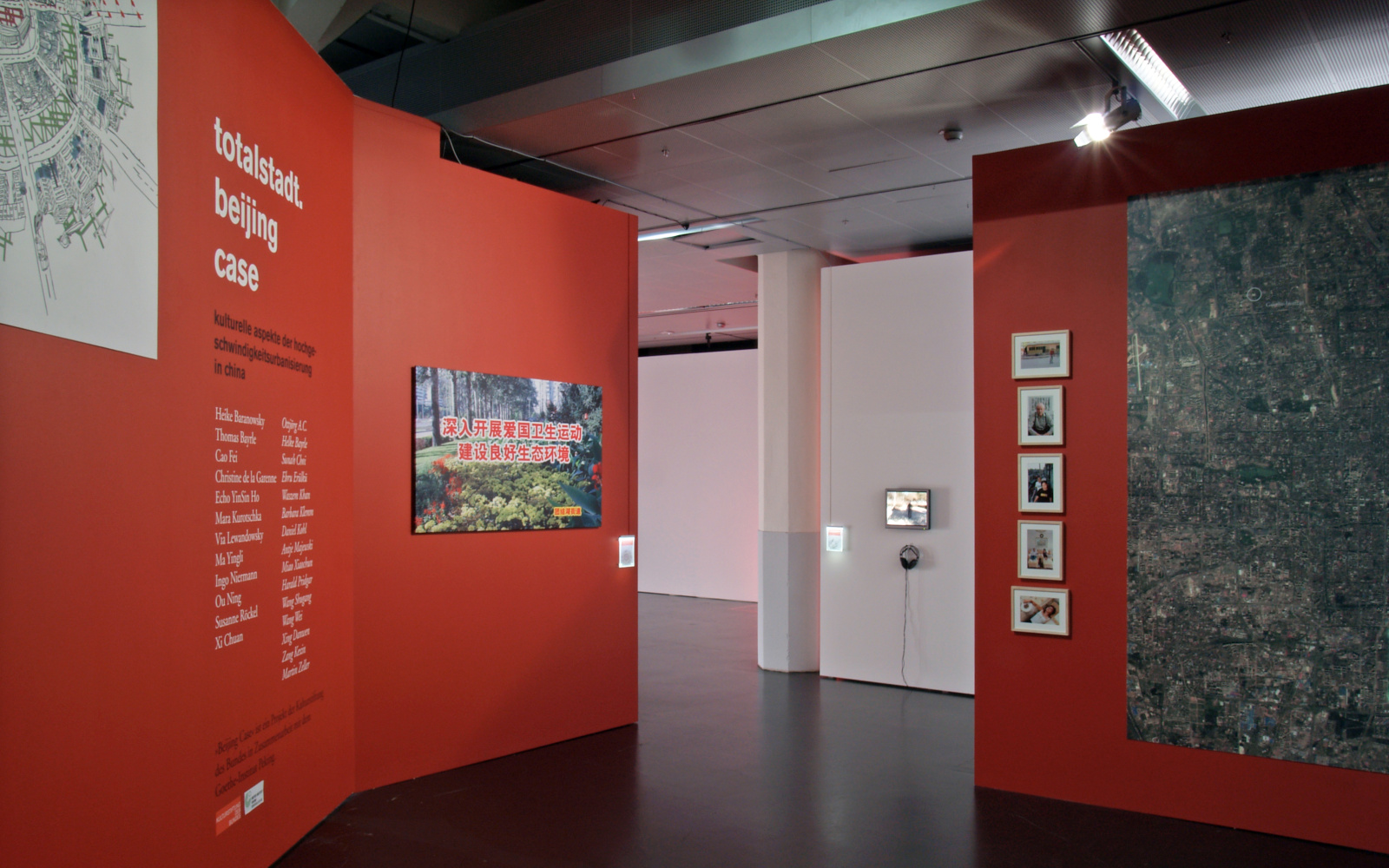- Exhibition
Total City. Beijing Case
Cultural Aspects of the High Speed Urbanization in China
Sun, September 24, 2006 – Sun, January 07, 2007
The rapid ascent of China to the status of an economic power has become the focus of media attention. Yet while the country is increasingly perceived in the Western world as an economic rival and political partner, we know comparatively little about its social and cultural developments.
The urbanization process in Peking.
The urban growth of China is being carried out with an expenditure of energy, land and material that is inconceivable for us. More than 40% of the people in the most populous country on earth live now in cities; by 2020, it will be 60%, that is, 800 million people. Conventional city planning approaches run up against their limits in Peking because of the rapid development, while the official master plan plays, in reality, only a peripheral role. Who makes what decisions in the complex process of urbanization is often mysterious. Lucrative construction plans take the limelight, while the total urban context is frequently ignored. Internationally famous architectural firms like Rem Koolhaas, GMP and Herzog & de Meuron are now making station in Peking and contributing decisively to the reshaping of the new Peking. New »landmarks« are arising in the cityscape – the best known is surely Rem Koolhaas’s CCTV Tower. The face of Peking is changing rapidly. Entire city districts are disappearing, new ones arising, resettlements taking place in the grand style.
Under the sign of high-speed urbanization
During a four-month’ working stay in Peking, twelve Chinese and German artists studied the effects of urban development on art and culture. They produced works in various genres that came to grips, mainly from a subjective angle, with aspects of subjects like everyday material culture, socio-political change and new concepts urban construction and architecture. Building on the exhibition »Informal City?«, which presented the first results of the similarly named scholarship program in 2005 in Peking, the Karlsruhe exhibition »die totalstadt. beijing case« will draw the project to a close.
In addition to the works of the »beijing case« artists Heike Baranowsky, Thomas Bayrle, Cao Fei/Ou Ning, Christine de la Garenne/Via Lewandowsky, Echo Ho, Mara Kurotschka, Ma Yingli, Ingo Niermann, Susanne Röckel and Xi Chuan, the exhibition will be enriched by further artistic positions from China and Germany such as those represented by Miao Xiaochun, Zhang Dali, Xing Danwen, Sunah Choi and Barbara Klemm. The exhibition will be accompanied by an extensive catalogue with contributions from approximately 30 authors (published by Buchhandlung Walther König, Cologne) which will provide descriptions and analyses of art works and background information on the phenomenon of high-speed urbanization in Peking.
Event Website
Imprint
- Curator
Team
Anne Däuper ()
Martin Häberle (technical project management)
Marianne Meister (registrar)
Matthias Ossmann (technical project management)
